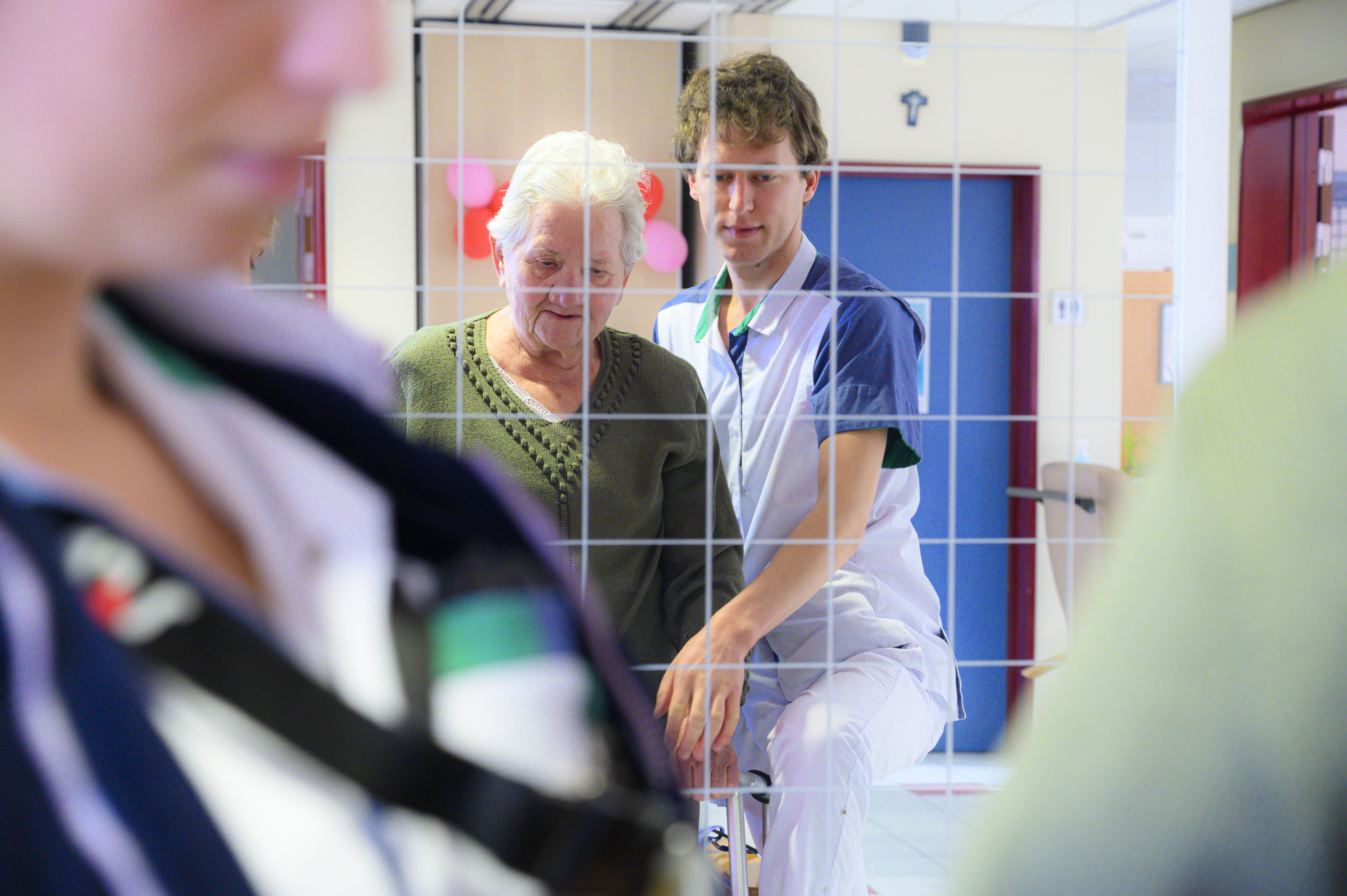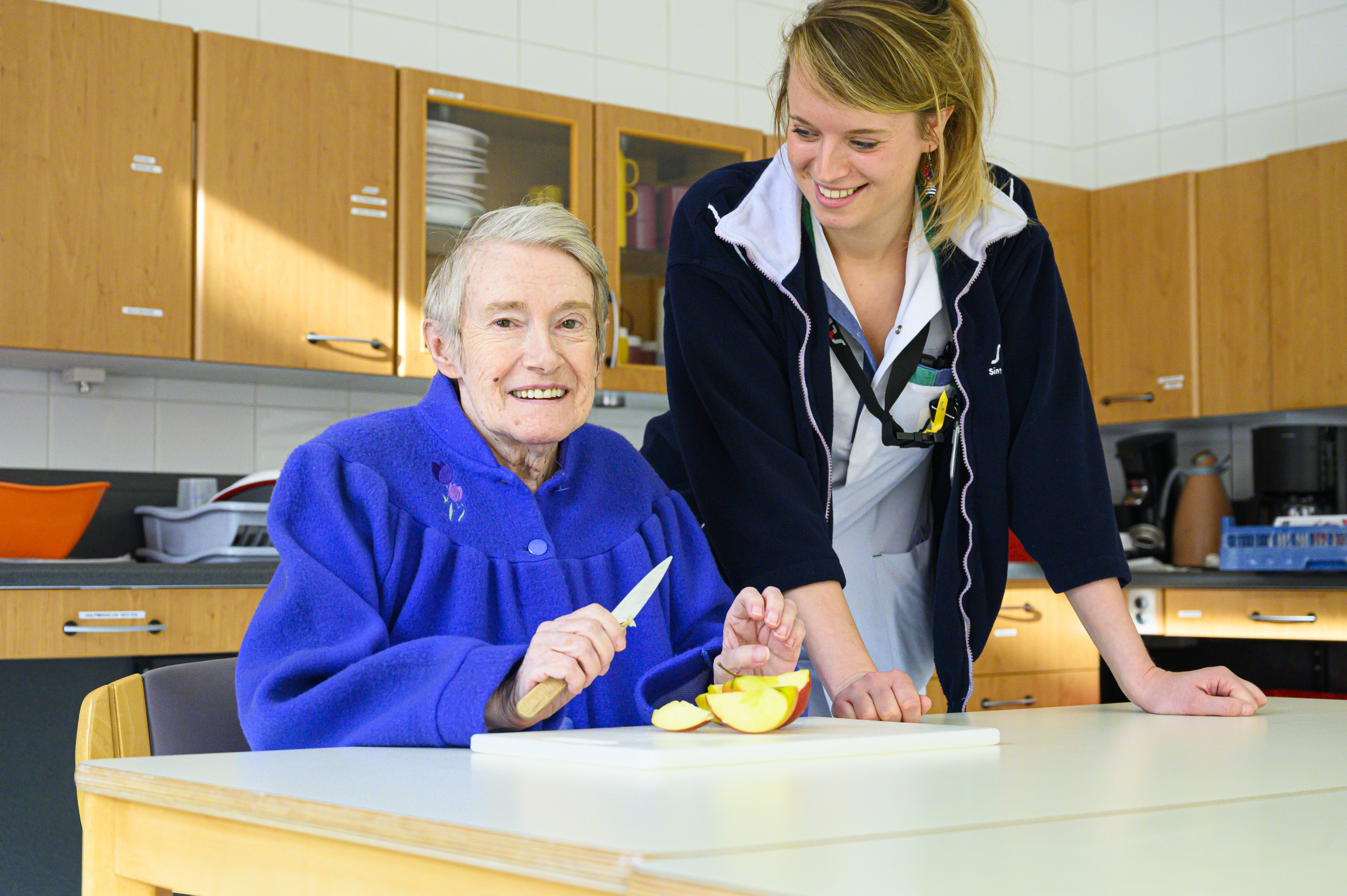
Practical information
What is it?
What is it?The occupational therapist assists patients with regaining and maintaining daily functioning. The occupational therapist uses activities to encourage the patient's self-reliance and independence.
An occupational therapy treatment plan is developed in consultation with the attending physician. The occupational therapist is part of a multidisciplinary team that consults weekly with the geriatric specialist.

Occupational therapists work to maintain or regain the patient's motor and cognitive abilities. Specifically, this means:

Maintain daily activities
During individual sessions, patient learns skills to manage their daily activities effectively, such as:
- moving around
- washing and/or going to the toilet by oneself
- preparing meals, making coffee, making sandwiches and eating independently
The occupational therapist also provides appropriate aids, if necessary, and teaches the patient how to use them. Training for daily (household) activities enhances the patient’s mobility and speeds up their return home.
Observing and encouraging mental and social skills
Group and socio-cultural activities (e.g. midday music, gymnastics, a slide show), stimulate patients' social skills.
Advice
Occupational therapists also serve as a point of contact for family members and loved ones regarding the patient’s care situation. You can consult them for advice on wheelchair types, necessary vehicle and home adaptations, including home visits and possible follow-up.
Geriatrics Internal Liaison
Geriatrics Internal LiaisonThe Geriatrics Internal Liaison aims to maintain or improve the self-reliance and quality of life of patients over 75 years old who were not admitted to the Geriatrics Department.
A team with specific knowledge about elderly care will work with the patient to identify risks (e.g. falls) and age-related problems (e.g. vision disorders or memory issues). In consultation with the patient and the department team, measures are taken to mitigate these risks and address these issues.
Something wrong or unclear on this page? Report it.



